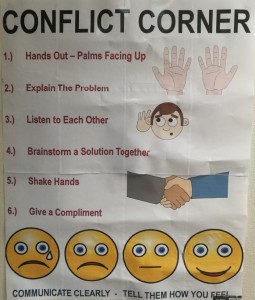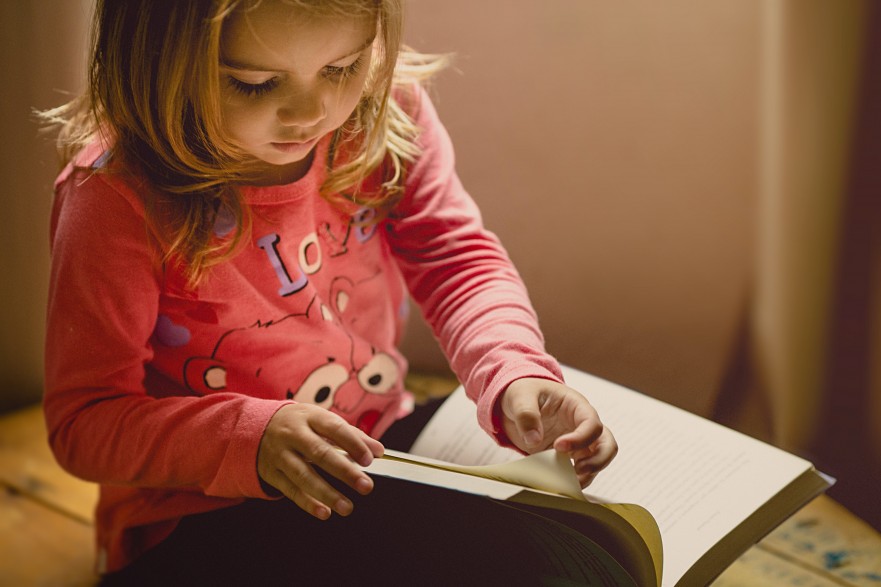Have you noticed some parents are too involved with their child’s learning? The ones that solve their problems, do their work, and give them answers? This has become increasingly apparent through distance learning, as some parents sit next to their child the entire class. Teachers, including myself, do this from time to time as well. If students work hard and use their resources, they are capable of getting the correct answers. They are also creative. Answers and solutions that students discover are often more clever than we could ever expect. It’s important to teach them skills and concepts, but it’s also important to know when to just get out of their way.
LET THEM FIGURE IT OUT
Knowing each student individually can help determine when to intervene and when to let them go. There are times that we need to step in and help students. However, oftentimes we need to let them discover ideas and concepts on their own. Allowing students to go through a “productive struggle” can develop persistence, determination, and confidence. Use “wait time,” even when it feels uncomfortable. Giving students the answer is doing them a disservice. By doing so, we undermine them; essentially saying that they aren’t capable of finding the answer themselves. My parents would ask probing questions when helping me with my homework. It was a bit frustrating at the time since all I really wanted was the answer, but they wouldn’t give it to me. As I reflect on this twenty years later, I’m glad they didn’t. Twenty years from now, your students will feel the same way.
GIVE THEM AUTONOMY
Another example of getting out of their way is allowing students to have more autonomy. We can empower them to have a voice and to create their own path of success in class. For this to happen, we need to create a progressive classroom climate where students feel safe both physically and emotionally. When they feel this way, they are more likely to take risks in their learning. Being prepared with appropriate progressions and questioning strategies can help this happen. “How many ways can you show a classmate that you value them?” “Create a skit that demonstrates the word caring.” Both of these allow students to be creative, while still meeting expectations of learning and showing kindness. Ask questions like, “How might learning how to jump rope (or whatever skill or concept you are teaching that day) benefit what you love to do?” This allows them to understand the ‘why,’ and connect what they are learning in school to what they enjoy doing outside of school, making it more meaningful.
Providing opportunities for students to reflect after activities is another way to allow them to be heard, increasing student buy-in. Often, they discuss ideas/strategies that I’ve never considered, which I can then integrate in future lessons. By having them discuss positives, it connects happiness and physical education, which creates excitement about returning to PE class. By giving students autonomy, I am able to learn from my them, rather than just them learning from me. It’s a two-way street.
PROVIDE STRATEGIES, BUT LET STUDENTS APPLY THEM
Providing students strategies they can use in their everyday life can be significant. It reminds me of the quote, “Give a man a fish and you feed h im for a day; teach a man to fish and you feed him for a lifetime.” In class, I provide students with strategies and ways to solve problems and regulate their emotions, but I won’t do it for them. After all, they won’t have me at home to “fix” a problem, so they might as well learn now. We use a “Conflict Corner” (from Ben Landers) where students are encouraged to go if they need to solve a problem with another student. I have modeled the steps (stating the problem, active listening, brainstorming a solution, fist bump, and give a compliment) and had them practice. Seeing students using these strategies within the school day is rewarding. Another example is teaching students how to regulate their emotions (taking deep breaths, walking away, taking a “mindful minute,” etc.). I always ask them to share their ways to calm down as well. A student once told me that when he gets angry at home, he runs around his house three times, which prevents him from saying or doing something he would regret. Remember, we can often learn new strategies by listening to them.
im for a day; teach a man to fish and you feed him for a lifetime.” In class, I provide students with strategies and ways to solve problems and regulate their emotions, but I won’t do it for them. After all, they won’t have me at home to “fix” a problem, so they might as well learn now. We use a “Conflict Corner” (from Ben Landers) where students are encouraged to go if they need to solve a problem with another student. I have modeled the steps (stating the problem, active listening, brainstorming a solution, fist bump, and give a compliment) and had them practice. Seeing students using these strategies within the school day is rewarding. Another example is teaching students how to regulate their emotions (taking deep breaths, walking away, taking a “mindful minute,” etc.). I always ask them to share their ways to calm down as well. A student once told me that when he gets angry at home, he runs around his house three times, which prevents him from saying or doing something he would regret. Remember, we can often learn new strategies by listening to them.
Just because we are the teachers doesn’t mean we shouldn’t continue to learn. Yes, we are the “experts” with our lesson plans, progressions, assessments, cues, and modifications, but we should always model open-mindedness and a growth-mindset for our students. Students are capable of more than we might think. If we allow them to solve their own problems, it will benefit them long-term. By giving students autonomy and responsibilities, they can teach us a great deal… IF we let them.










Comments 3
Great blog! I just attended the Doug Fisher Distance Learning Playbook training through AZK12. He discussed the concept of productive struggle. Students need it and you are right, we are robbing them of valuable learning if we take the struggle away from them. Teachers need to be aware of how much scaffolding we provide. We also need to teach parents to allow their children the opportunity to struggle and sometimes fail. Doug Fisher said that he’s told parents who are helping a little too much during distance learning, “I know you have something you can clean now.”
Author
Thanks for checking it out, Nicole!
Thank you for this post! I’m teaching first grade over Google Meets, and the majority of our time online together is spent whole group, so I’ve been struggling with just how much wait time to give. It’s been amazing, however, to see how well some of my students have adapted to this new way of learning, and I love getting to see their creative sides come through.